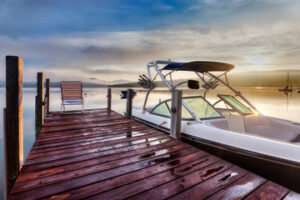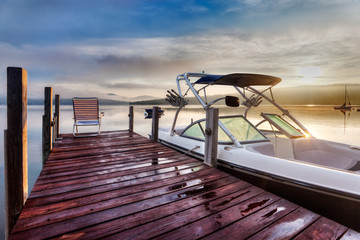Installing a dock can be a challenging job. Some types of docks are designed to be easy to install, while others are made to be more complex. Consider a modular dock if you want to save money on the project. These are designed to be easy to assemble without the use of heavy lifting equipment or augers. The modular design also makes dock maintenance much easier.
 Hiring a professional is the best option if you want to build a boat dock. Professional dock builders are well-versed in shoreline management techniques and the most recent materials. They are also well-versed in various dock designs. Beautiful designs can be found online, but you must gain experience building docks to choose the right one for your property. Hiring a professional at https://dockbuildingcharleston.com/ is an excellent way to ensure the longevity of your dock.
Hiring a professional is the best option if you want to build a boat dock. Professional dock builders are well-versed in shoreline management techniques and the most recent materials. They are also well-versed in various dock designs. Beautiful designs can be found online, but you must gain experience building docks to choose the right one for your property. Hiring a professional at https://dockbuildingcharleston.com/ is an excellent way to ensure the longevity of your dock.
The first step of dock installation is to prepare the dock area. It should be level. Ensure the upright posts stick out about two to three inches from the bottom plate. This will make the dock more stable. Then, loosen the cross-arm clamps and slide the post into place. You can then tighten the cross-arm clamps once the dock is in place. Docks are usually sold as kits. To assemble a basic dock, you’ll need to purchase the following components: bottom plates, crossarms, upright posts, stringer brackets, caps, and crossarm clamps. To install the dock, follow the instructions provided by the manufacturer.
Choosing the right dock is an important decision. It’s also best to wait until spring before starting the process. While this may mean longer installation times, the warmer weather will make the installation process much easier. If you’re looking for a durable dock, consider choosing one made of high-density polyethylene pipe. These types of docks will stand up to the winter’s harsh weather. Then, be sure to choose a professional with dock installation experience.
Before beginning a dock installation, you should measure your waterfront. This is vital because different types of shorelines have different requirements. The depth of the water level are two important factors that will affect how your dock is placed. To ensure a successful installation, you should measure each board and mark the locations of the screws and nails. It would be best if you also planned for future growth. By making a plan ahead of time, you’ll be able to avoid many headaches and mistakes.
Depending on the type of dock, you can choose from different types of anchors to secure it properly. Some docks are built with fixed anchors, while a heavy suspension supports others. A suspension dock is ideal for choppy water, but isn’t suited for very deep water. Because of the engineering challenges, suspension docks are less common than other types of docks. They’re also a bit more expensive than other types and require more planning time.
A floating dock cannot be placed in shallow water near the shore, so it should be placed farther out. The dock should have a clear transition from the land to the water. In addition, the floating dock should be placed at a specific point on the property. It should be designed to be suitable for a wide variety of users. Materials used in dock construction can be wooden, aluminum, or steel. These materials are strong and durable, but they can cause environmental issues. Choose a material that is resistant to corrosion. It would be best if you also considered the longevity of the dock before choosing a material. Aluminum, for example, can last for decades and is more environmentally friendly than concrete.
The cost of a floating dock depends on its size, material, and location. Typically, the cost ranges from a few hundred to a few thousand dollars. However, some floating docks require docking permits or approvals, depending on the water’s characteristics. A floating dock should be connected to a fixed dock by a ramp to prevent water from reaching the dock.
For inland lakes, three to four feet of water is sufficient. Deeper waters make dock installation more difficult, so use an excavator to make the process easier. If the water is soft, you might need a pile dock. If the water is too deep, the legs will sink. Adding a flat aluminum plate to the ends of the pipes will provide support and prevent the legs from sinking.
You can also use strategically placed chains to help with the lowering.
